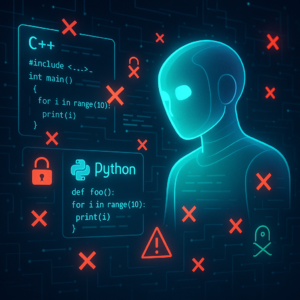Patching Up Noise: How PatchFinder Revolutionizes Information Extraction from Scanned Documents

Patching Up Noise: How PatchFinder Revolutionizes Information Extraction from Scanned Documents
In today’s world, the sheer amount of information stored in scanned documents can be overwhelming. Governments and corporations have long relied on these digital archives to store data crucial for everything from historical research to environmental safety. Yet, pulling valuable information from these documents is about as fun as watching paint dry. Enter PatchFinder, a cutting-edge algorithm that uses Vision Language Models (VLMs) to not only tackle this process more efficiently but also to do so with impressive accuracy.
Seeing the Forest for the Trees: The Problem with Scanned Documents
For decades, the go-to method for extracting information from documents has been Optical Character Recognition (OCR) – basically, software that reads text from images. However, this method isn’t without its drawbacks. OCR can be finicky, struggling especially with “noisy” documents that feature complex layouts, varied fonts, and heaven forbid – handwritten notes. Plus, it’s expensive, making it less accessible for smaller organizations.
Not to mention, the typical approach to handling such documents involves a tedious two-step dance. First, you’d run the document through an OCR system. Then, you’d use a large language model (LLM) to make sense of and organize that text. But it’d be all too easy for errors to creep in at each stage, giving you a headache bigger than trying to solve a Sunday crossword puzzle.
Enter PatchFinder: A Smarter Way to Work with Words
PatchFinder steps onto the stage as something of a document superhero. Think of it as the digital equivalent of a detective, using VLMs to analyze scanned documents with surgical precision. It takes a holistic approach by combining vision (seeing the text as images) with language models (understanding the text) for analysis. This means the algorithm can handle both the vision and the language components in one fell swoop.
PatchFinder’s magic trick? The Patch Confidence Score. By breaking down a document into smaller, overlapping “patches” (imagine slicing a pizza into bite-sized pieces), and checking how confident it is in its predictions for each piece, PatchFinder reduces the chance of errors making their way into the final data extract, kind of like filtering out the offensive noise from a 90s garage band rehearsal.
Why Does This Matter? Real-World Impacts
Why should you care about such tech wizardry? Well, PatchFinder isn’t just a tech geek’s dream. It’s a game-changer for serious real-world issues, like tracking abandoned oil and gas wells. These wells can leak methane, a potent greenhouse gas, into the environment, making them, quite literally, hidden toxic hazards. Pinpointing their exact locations from historical documents is critical for environmental preservation efforts.
With PatchFinder’s prowess, researchers can more accurately extract essential data like latitude, longitude, and True Vertical Depth (TVD) of these wells – ensuring we know precisely where they are and how deep they’ve dug into the Earth. The precision of such data is crucial, as even tiny errors can lead to big misunderstandings, like thinking you’ve found an ancient treasure stash when it’s just filled with rusty nails.
Down-to-Earth Examples and Trial Runs
But don’t just take our word for it. PatchFinder was put through its paces on 190 noisy, crumbly old scanned documents about oil wells from several U.S. states. It aced the test with a 94% accuracy rate on extracting vital data points, blowing past other methods, including the powerful ChatGPT-4o, by a whopping 18.5 percentage points.
And just to give it another spin, PatchFinder was tested on historical financial documents and receipts, setups notorious for their inconsistent, stubborn layouts. Even with the added challenge of Gaussian noise (think of turning up the mental static), PatchFinder still performed admirably, easily outperforming other models. It’s as if PatchFinder were humming along happily, singing “I Like Noisy Scanned Documents and I Cannot Lie.”
Key Takeaways
-
OCR no more? Instead of the old, clunky two-step method of document data extraction using OCR, PatchFinder streamlines the process using an all-in-one VLM approach, making it both cost-effective and accessible.
-
Confidence is Key. By using a Patch Confidence Score, PatchFinder ensures that only the most reliable predictions are considered, upping the accuracy ante.
-
Not Just a Lab Experiment. Its application in real-world environmental cleanup shows PatchFinder’s practical value – it’s an algorithm that doesn’t just live in a lab, but makes a tangible impact outside.
-
Noise? Bring it On! PatchFinder excels even in noisy environments, from old oil well documents to faded financial statements, showing flexibility and resilience.
PatchFinder isn’t just an academic curiosity; it’s a potent tool that’s helping us crack the code of our paper past, all while setting the stage for a cleaner, better-informed future. Whether you’re a computer whiz or someone who’s just tired of squinting at digitized squiggles, this is research you can rally behind. Cheers to making sense of the noise!
If you are looking to improve your prompting skills and haven’t already, check out our free Advanced Prompt Engineering course.
This blog post is based on the research article “Patchfinder: Leveraging Visual Language Models for Accurate Information Retrieval using Model Uncertainty” by Authors: Roman Colman, Minh Vu, Manish Bhattarai, Martin Ma, Hari Viswanathan, Daniel O’Malley, Javier E. Santos. You can find the original article here.




